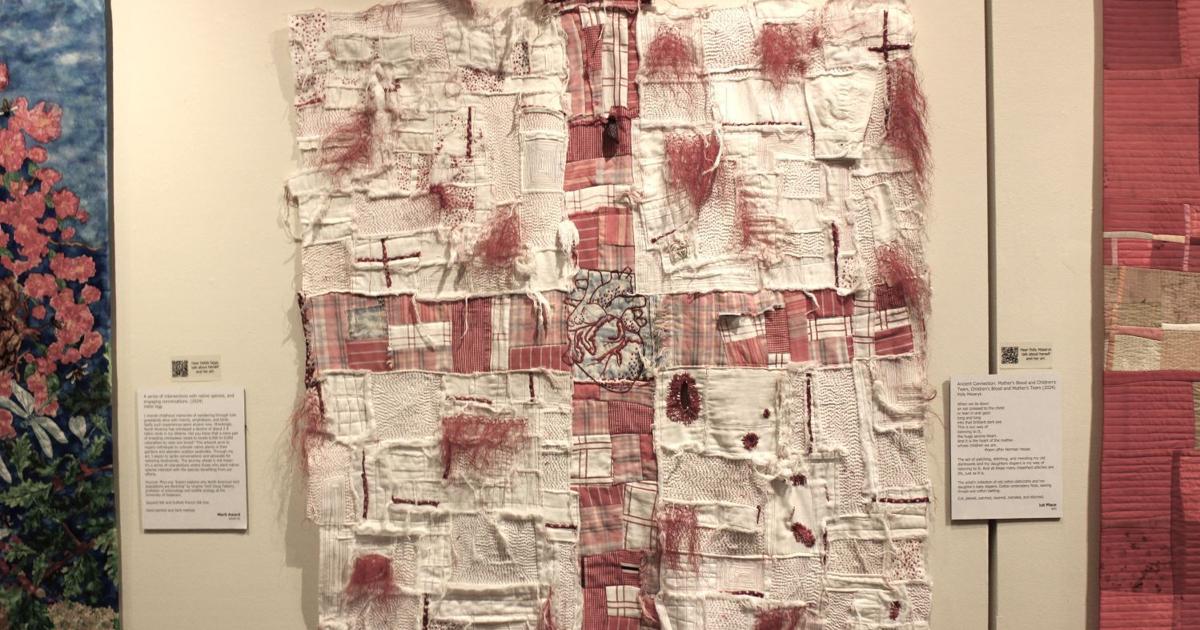
BRIGHAM CITY – The Brigham City Museum of Art and History, located at 24 N. 300 W., is holding their annual quilt show. They have a display from Utah Surface Design Group as part of this year’s annual quilt show.
This year the annual quilt exhibit is offering a little different take on quilting. They’re diving into the theme of “Intersections,” inviting participants to discover the myriad ways in which intersections shape our lives and art and inviting visitors to be open minded.
“Quilts are under the umbrella of the Utah Surface Design Group,” said Museum Director Alana Blumenthal. “The artists are all from Utah and tend to do art and designs using fabrics. We are trying to elevate working artists.”
There were two qualified judges that evaluated the collection of 48 entries.
The exhibition will be hanging until Saturday, September 21. The museum is open Tuesday-Friday 10:00 a.m. – 5:00 p.m. and Saturdays from 1:00 p.m. – 5:00 p.m.
This year’s First Place Winner was from Polly Masaryk, entitled “Ancient Connection: Mother’s Blood and Children’s Tears, Children’s Blood and Mothers Tears.”
She patched in her daughter’s diapers, old cotton dishtowels, cotton embroidery floss, quilting thread and batting to create her winning entry.
Another entry “In Repose,” goes a little deeper exploring the intersection of life and death as it brings a call to action in our individual understanding of existence.
The piece by Julie Strong depicts the death of her friend and belief that within her perception of her physical stillness and state of repose there lies a potential for growth, evolution in her life and her existence.
“Whatever your belief system the moment of loss is pivotal,” she wrote in her explanation of her work. “Someone is here. Then they are not.”
She said her memories of her friend and understanding of her friend’s life have blossomed since she’s been gone.
“I feel her presence in a different and poignant way” she said. “In this sense, she has brought a particular beauty in my life.”
The piece has a dark linen background and cotton loose-weave netting was used for the tree and ouroboros, an ancient symbol of a serpent with its tail in its mouth, continually devouring itself and being reborn from itself.
There are other entries with simpler explanations like the quilt made from paper by Judy Elsley. The quilted squares were made from fabric paint, stencils and wood blocks applied on Geli paper. The squares were assembled to resemble quilt patches used in more traditional quilts.
There is much more to see and feel in this year’s exhibition.
The museum wants participants to discover the myriad ways intersections shape their lives and art. It doesn’t matter if the viewers are drawn to physical landscapes, emotional intersections, or the convergence of different paths, this exhibit promises to ignite their imagination and inspire creativity.
“I know there is no straight road
No straight road in this world
Only a giant labyrinth
Of intersecting crossroads”
-Federico Garcia Lorca

